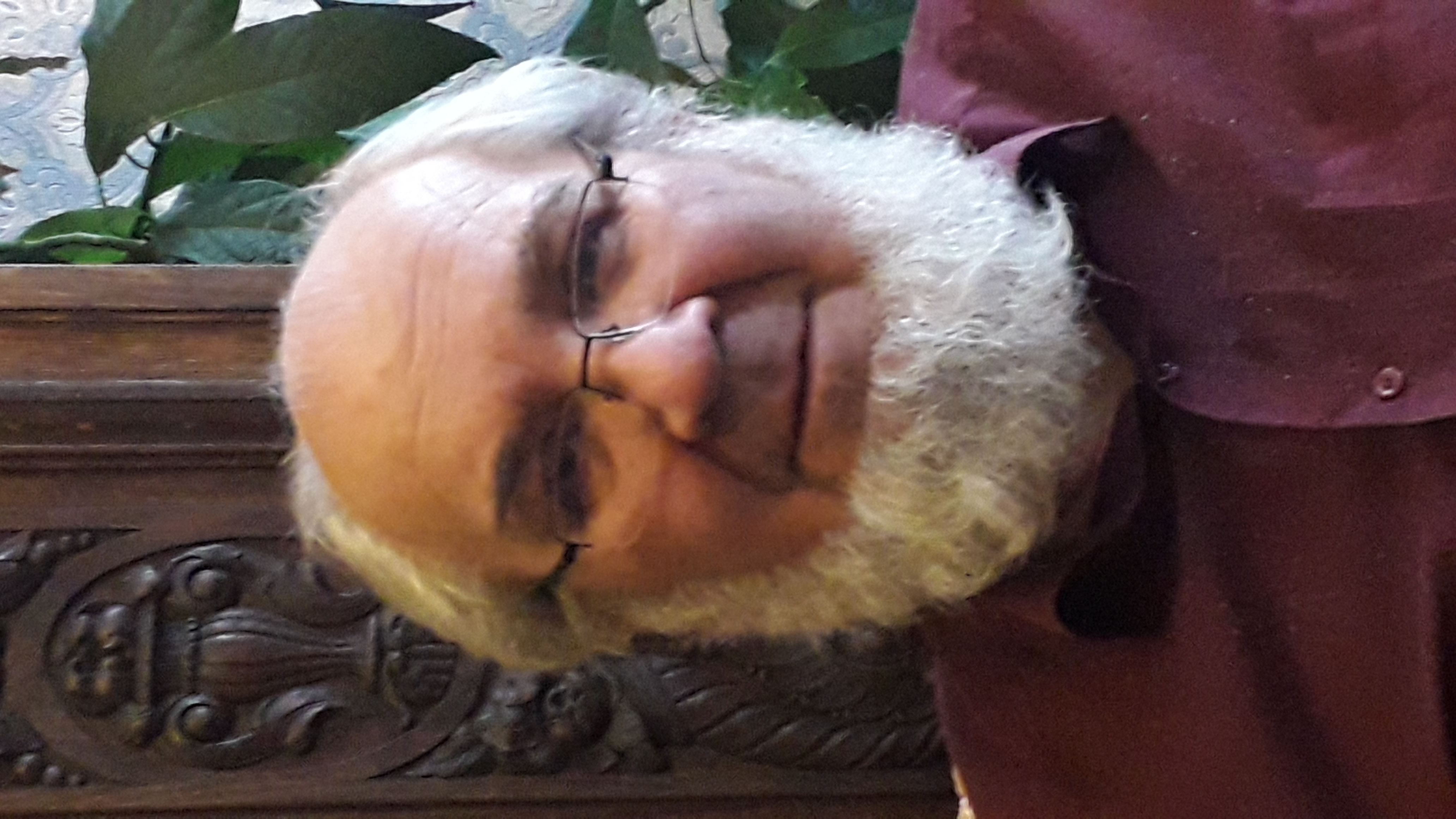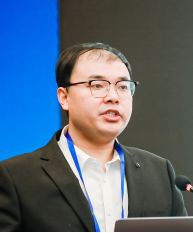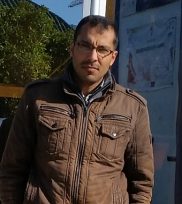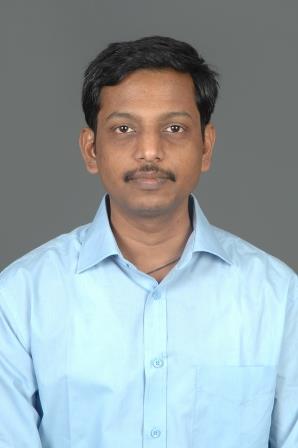Invited Speakers
Andrey Pavlychev
Professor, Solid States Electronics Department, St. Petersburg State University, RussiaSpeech Title: Atom-molecular Architecture of Native Bone: Composition and Spatiotemporal Changes under Biogenic and Pathogenic Conditions
Abstract: Native bone is a hierarchically organized triple (organic – mineral – water) composite. X-ray diffraction, X-ray photoemission, Raman and IR spectroscopies were applied to study the interplay of organic and mineral nanocomponents under biogenic and pathogenic conditions. The first samples group – cortical bone of young, adult and mature healthy rats – is used to inspect temporal changes in bone composite. The second samples group – saw-cuts of human femur at arthroplasty of the osteoarthritis (OA) damaged knee compartment – is used to inspect spatial changes in the composite.
We discuss the correlated changes in the Ca 2p3/2,1/2, P 2p3/2,1/2, F, O, N and C 1s- core electrons binding energies, degrees of crystallinity, sizes of crystallites, Ca2+ deficiency and lattice-constants of calcium-hydroxyapatite (Ca10(PO4)6(OH)2).
CONCLUSIONS: Mineralized bone is a kind of electric battery composed from nanometric cells formed from negatively charged nanocrystals immersed into positively charged hydrated nanolayers. This nanoenergy concept is tightly related with aging processes because the nanocells are strongly charged in a newborn bone and discharge with age. The counter Ca2+ and OH ionic currents reduce the inhomogeneity in charge distribution. The interplay of organic subsystem with nanocrystals is examined and the electrostatic energy density as a function of age is computed. The OA deviations are due to catalytic reactions, carbonization and amorphization of mineral bone at the collagen – mineral interface. These processes are enhanced in the border of “erased cartilage-mineral”, but not inside the sclerosis area where the restoration of bone mineral is detected. Statistical and individual aspects of spatiotemporal changes in bone under biogenic and pathogenic conditions are discussed. The specific role of water in the composite is discussed in more details. The work is financially supported by Russian Science Foundation Grant 23-21-00172.
Xianbin Huang
Associate Professor, School of Petroleum Engineering, China University of Petroleum (East China), ChinaSpeech Title: Current status of polymers for high temperature resistant drilling fluids
Abstract: With the gradual depletion of shallow oil and gas resources, deep (>4,500m) and ultra-deep (>6,000m) oil and gas have become the main sources of oil and gas resources in China. With the advancement of technology, the drilling depth has been gradually increased, and there are dozens of oil and gas wells exceeding 8000m in China. However, the high temperature in the deep formation poses a great challenge to the temperature resistance of drilling fluids. Water-based drilling fluids (WBDF) are multistage dispersion systems of clay, weighting agent and a variety of chemical materials in water. Drilling fluid serves as “drilling blood” and plays a vital role in carrying and suspending drill cuttings, stabilizing wellbores, and lubricating and cooling drill bits during drilling-based engineering. Water-soluble polymers mainly regulate rheology and control filtration in drilling fluids, but their performance fails under high-temperature and high-salt conditions, which is a serious problem for drilling safety and efficiency. This presentation will focus on the topic of high temperature resistant polymers used in the drilling fluid. It will cover the technical challenges of deep well drilling, the challenges for polymers and the current status of research on high temperature resistant polymers. Finally, some research results on high temperature resistant polymers from our team will be presented.
S. Haddout
Department of Physics, Faculty of Science, Ibn Tofail University, MoroccoSpeech Title: Optimization of Warpage Defect in Injection Moulding Process using Polypropylene Material (DACIA Logan L90 Front Bumpe)
Abstract: Plastic-based products are being used more and more frequently. Due to the growing demand for thinner products, lower production costs and higher quality, there has been an increase in plastic molding research projects. Productivity can be increased by optimizing the injection molding parameters. In order for the process optimization to be successful, optimal parameters must be set. In this presentation we will discuss the warpage defect on the front bumper of DACIA Logan L90. The optimization was performed using the TAGUCHI method and the percentage contributions were calculated using an analysis of variance (ANOVA). A significant correlation was found between mould temperature (35.80%), packing time (35.59%), melt temperature (10.13%) and packing pressure (5.33%). Melting temperature (200 °C), packing time (0.8 s), packing pressure (375 MPa) and mould temperature (80 °C) were found to be the most effective parameters to minimize warpage. The ANOVA analysis and the TAGUCHI method can be used to determine optimal parameters and their contribution percentage. As a result, it shows that design of experiments method is one of the best tools to get the best quality for a production.
Alina Vladescu
Associate Professor, National Institute of Research and Development for Optoelectronics, RomaniaSpeech Title: Wear and corrosion properties of Ti based carbo-nitrides obtained by cathodic arc evaporation
Abstract: The goal of the paper is to increase service life of cutting tools used in wood industry, which working into severe conditions. For this study, Ti-based carbo-nitrides were prepared by cathodic arc evaporation at different N2 and C2H2 mass flow rates: series-1 (20 sccm N2, 110 sccm C2H2), series-2 (40 sccm N2, 90 sccm C2H2), series-3 (80 sccm N2, 50 sccm C2H2), and series-4 (110 sccm N2, 20 sccm C2H2).
Surface morphology, elemental/phase composition and roughness were examined before and after wear and corrosion tests in corrosive solution (water+sand). The results showed that all the coatings enhanced the wear and corrosion resistance of the uncoated steel. By increasing of the nitrogen flow rate during the deposition process, both wear and corrosion resistances are increased. Moreover, all the coatings exhibited a 111 orientation and the hardness was more than 30GPa.
Keywords: cathodic arc, wear and corrosion resistance, carbonitride coatings
Acknowledgements: This research was supported by a grant of the Ministry of Research, Innovation and Digitization, project number COFUND-M-ERANET-3-HardCoat-1 (no.311/2022), within PNCDI III, and to Romanian Core Program project no. PN-01/2023.
Ram Sevak Singh
Associate Professor & Coordinator, Department of Physics, OP Jindal University, IndiaSpeech Title: Hydrogen storage in sulphur-doped SiC nanotubes
Abstract: Hydrogen is a clean fuel and environmentally friendly source of energy. It can be utilized in diverse applications, including vehicles, aircraft, portable power to transportation, etc. Therefore, progressive research and development in area of hydrogen storage is ongoing. Nanotubes, having large surface to volume ratio, are attractive materials for hydrogen storage. Besides carbon nanotubes, other non-metallic nanotubes such as silicon carbide nanotube (SiCNTs) have been predicted as potential nanomaterials for hydrogen storage. In this talk, I shall focus on hydrogen adsorption properties of sulphur-doped (S-doped) SiCNTs using first-principles calculations based on density functional theory. The calculated energy band structures, density of states, charge transfer and adsorption energy will be discussed. At the end, the talk would be concluded with future prospects of work in this area.
Ildoo Chung
Professor, Department of Polymer Science and Engineering, Pusan National University, KoreaSpeech Title: Well-defined porous biodegradable/thermoresponsive microspheres
Abstract: Porous biodegradable microspheres were fabricated by successful RAFT polymerization of methyl vinyl ketone (MVK) onto polycaprolactone (PCL) and polylactide (PLA), which was first synthesized by ring opening polymerization of lactide followed by an oil/water emulsion-evaporation method, then finally photodegradation of PMVK blocks by UV irradiation. Macro-CTA (chain transfer agent) was synthesized by reacting carboxylic acid terminated CTA, S-1-dodecyl-S’-(α,α’-dimethyl-α’’-acetic acid) trithiocarbonate (DDMAT) with hydroxyl terminated polycaprolactone, which was then used for the synthesis of triblock copolymer with methyl vinyl ketone (MVK). The synthesized block copolymers were characterized by FT-IR, 1H NMR spectroscopies. Gel permeation chromatography (GPC) was used to evaluate the molecular weight and molecular weight distribution and monitored the photodegradability of the block copolymers. For photodegradation by UV light under dried condition, the molecular weight of triblock copolymer was decreased gradually with UV irradiation time, reaching close to that of macro-CTA, meaning that 90% of PMVK block was photodegraded after 24 h of UV irradiation. The morphology of microspheres was spherical with smooth surfaces before UV irradiation. Microspheres fabricated only from PCL homopolymers could also retain their smooth surface after UV irradiation. However, those from PCL-PMVK and PCL-PLA-PMVK block copolymers had rough surfaces and porous structures after UV irradiation due to the photodegradation of PMVK blocks as a porous template. The porosity and shape of the microspheres and shape of microspheres were dependent on the PMVK contents and size of microspheres.
Murali Rajaram
Associate Professor, Department of Materials Physics, Saveetha University (SIMATS), IndiaSpeech Title: Mesoporous Ultrathin Graphitic phase C3N4-based composites for superior photocatalytic performance in refractory pollutants degradation
Abstract: Research on 2D nanomaterials with unique structural and electronic features has shown rising to a remarkable height and will keep on staying as a significant topic in materials science. In this regard, there are intensive interests to introduce 2D g-C3N4 materials and exploration of their unique tunable and controllable properties in a predictable manner. These 2D materials are achieved through various synthetic routes and the crucial role of these 2D materials is having a broad range of applications, including CO2 photoreduction, the degradation of refractory pollutants, and the production of renewable and sustainable hydrogen fuel. Graphitic carbon nitride (g-C3N4) has been regarded as a promising metal-free photocatalyst for addressing the energy crisis and environmental issues because of its fascinating electronic band structures, photochemical stability, and efficient light harvesting with suitable bandgap energy of 2.7 eV. However, its photocatalytic effectiveness is constrained by low surface area and low-charge carrier mobility. Its distinct band structure provides a promising technique to enhance the charge separation, improve the surface area, and enhance light absorption when coupled with a semiconductor having a wide bandgap. Metal oxides, sulfides, and ferrites have been categorized and described as the three main systems of g-C3N4-based nanocomposites. The future challenges and prospective solutions that may direct the development of 2D advanced nanomaterials based on g-C3N4 and their photocatalysis related applications overviewed based on our recent results.
References:
1. Xiong, J., Di, J., Xia, J., Zhu, W., Li, H., 2018. Surface Defect Engineering in 2D Nanomaterials for Photocatalysis. Adv. Funct. Mater. 1801983- 1802002.
2. Leelavathi, H., Abirami, N., Muralidharan, R., Kavitha, H.P., Tamizharasan, S., Sankeetha, S., Arulmozhi, R., 2021. Sunlight-assisted degradation of textile pollutants and phytotoxicity evaluation using mesoporous ZnO/g-C3N4 catalyst, RSC Adv. 11, 26800–26812.
3. Leelavathi, H., Abirami, N., Muralidharan, R., Kavitha, H.P., Tamizharasan, S., Sankeetha, S., Kumarasamy, A., Arulmozhi, R., 2023, Construction of step scheme g-C3N4/Co/ZnO heterojunction photocatalyst for aerobic photocatalytic degradation of synthetic wastewater, Colloids Surf. A Physicochem. Eng. Asp. 656, 130449.
4. Zhu, Y., Peng, L., Fang, Z., Yan, C., Zhang, X., Yu, G., 2018. Structural Engineering of 2D Nanomaterials for Energy Storage and Catalysis. Adv. Mater. 1706347- 1706366.
Jin-Won Park
Professor, Seoul National University of Science and Technology, KoreaSpeech Title: Urea removal in ultrapure water using enzymes immobilized on magnetic microparticles
Abstract: Ultrapure water is water from which ionic components including minerals, particulates, and microorganisms have been removed to a certain level or less. In this sense, it is also expressed by the term de-ionized water. As ultrapure water is essential for high-tech industries such as semiconductors, displays, solar power, pharmaceuticals, bio, and fine chemicals, related technology must be improved to the world's best in order to supply high-quality ultrapure water. The ultrapure water manufacturing process mainly consists of three steps: pretreatment, pure water production, and water quality adjustment. In the pretreatment step, filtration and reverse osmosis are combined to mainly remove particulate matter and dissolved substances. However, it is not easy to remove urea to a level of 1 ppb through these processes. In this study, we aim to develop a technology to remove urea in ultrapure water using enzymes immobilized on magnetic microparticles.
Tiandong Zhang
Associate Professor, School of Electrical and Electronic Engineering, Harbin University of Science and Technology, ChinaSpeech Title: Polymer-Based Dielectric Composites for Electrical Energy Storage
Abstract: This presentation will focus on the topic of polymer films for dielectric energy storage, and introduce the fundamental principle of electrical energy storage and application background about polymer-based dielectric composite films. The research status of several representative dielectric energy storage films will be introduced briefly, such as the inorganic/organic composite films, all-organic polymer films and multilayered polymer films. Most importantly, the modified polymer films for high-temperature dielectric energy storage will be introduced in detail due to the urgent needs in New Energy Vehicles and advanced propulsion weapons, high voltage transmission engineering.









